FCDC REIMAGINED
BY ANNEMARIE PEDERSEN • PHOTOS COURTESY OF FCDC
It is a time of transformation for the Field Crop Development Centre (FCDC) in Lacombe. Owned and operated by the provincial government since its establishment in 1973, the facility is now managed by Olds College, where staff have been tasked with a reimagination of the Centre’s feed and forage barley, malting barley and triticale breeding programs.
With its own Smart Farm program in an ongoing state of continual expansion, the innovative spirit of the project is reflected in the Olds College FCDC takeover. The ambition for both is to be known as agricultural centres of excellence.
The seed for this change was planted when the former NDP government revised the provincial agricultural research model and brought the area under government management. The UCP subsequently reversed course and spun these functions out to educational institutions with funding to be overseen by Results Driven Agriculture Research (RDAR), which launched in spring 2020. The transfer of FCDC management was negotiated under the College’s then-president Stuart Cullum. The handover was announced in October 2020 and transition commenced in January 2021.
Paul Thiel had just taken the position of thought leader in smart agriculture and was tasked to lead the FCDC transitional steering committee. The committee draws on the expertise of members from across the malting and feed value chains, including crop and livestock groups and researchers as well as brewing and malting organizations.
Thiel had previously been vice-president of innovation and public affairs with Bayer CropScience Canada, and Kofi Agblor, FCDC program director since July 2021, was likewise uniquely suited to oversee the process. As former managing director of the University of Saskatchewan Crop Development Centre (CDC), Agblor was central to the development of the highly productive crop breeding facility.
The reinvention of FCDC is a work in progress. While it will remain housed in its longtime Lacombe facility, which features pathology, biotechnology and quality laboratories as well as 600 acres of plot development land, its programming is the focus of change.
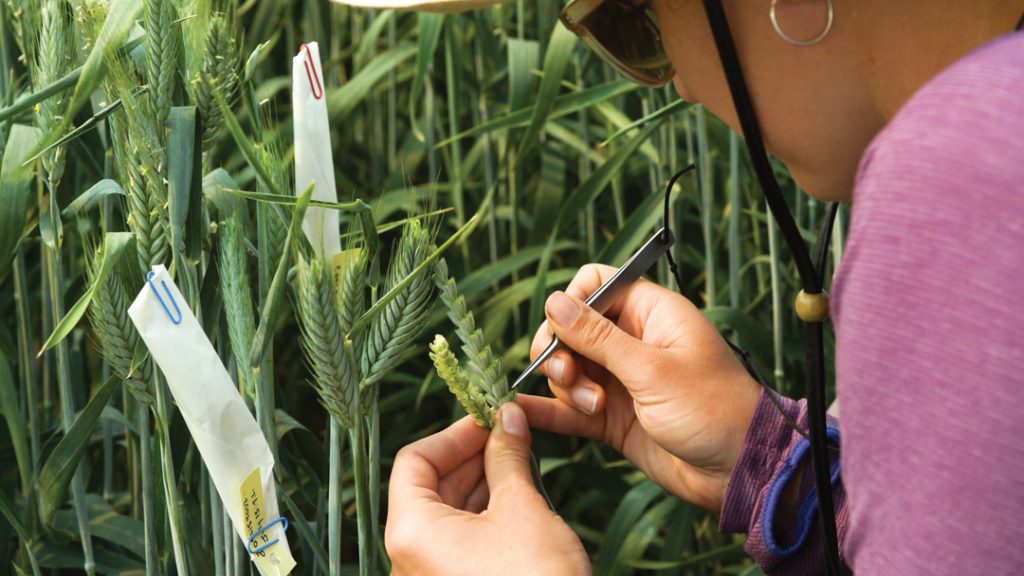
Over FCDC’s five decades of existence, it became a leader in variety development and produced several top western Canadian barley varieties. However, progress had stalled in recent years as government priorities shifted. While its breeding work remained high calibre, it no longer steadily produced new varieties for farmer and market adoption. The steering committee produced a five-year strategic guidance document focused on commercialization of new varieties that will be economically beneficial to farmers. Helpful in this process, as it now operates outside government, FCDC can more easily act in partnership with private industry. Closing the sustainability loop, as new varieties are adopted, the institution will earn royalties from the sale of certified seed. This money will then flow back to its breeding program.
The FCDC makeover also delivers inherent benefits to Olds College. The school and the breeding facility work to create collaborative learning opportunities for Olds College agricultural students. As well, a collaboration between FCDC and the Olds College Brewmaster and Brewery Operations Management diploma program will be developed in the future.
Located in Alberta’s world-renowned barley belt and partnered with a cutting-edge agricultural college, FCDC is primed for a positive relaunch. In Thiel’s words, “Lacombe is the ideal location in Western Canada for barley breeding.”
The following interviews have been edited for clarity and length.

PAUL THIEL
THE FARMER IS THE CUSTOMER
GW: FCDC work has been carried out on Olds College farmland in the past.
Paul Thiel: Correct. For many years, FCDC has placed some of its advanced lines for adaptation trials at Olds College. It’s now part of the same institution.
GW: Has the existing relationship between Olds College and FCDC helped with that transition?
PT: There was an existing relationship, but it certainly has expanded, particularly when you look at the existing programs at Olds College and how they relate to the breeding programs. For instance, Olds College conducts beef research feeding trials. Well, we can now look at the potential to integrate that kind of value-added research back to the value of feed grain or even feed-forage varieties coming out of Lacombe. And a brewery at Olds College—what a great asset to have when you are breeding malting barley.
GW: What is unique about the triticale program?
PT: This program develops and finishes varieties of triticale. There is potential to increase the acreage of triticale grown in Alberta. The advantages of triticale are very high forage yield and very good inherent disease resistance because of its rye background. In his program, breeder Mazen Aljarrah has developed very desirable traits, including smooth awn and awnless triticale.
GW: What is being done to shorten the long breeding window for these cereals?
PT: It’s not a sprint, but we’re working to make it not a marathon. A big effort being undertaken towards a speed breeding methodology and reducing the time from the initial cross to delivery. Taking it from maybe a 10- to 12-year cycle, we want to knock that down to a seven- or eight-year cycle.
GW: How is Olds College responding to the needs of farmers and industry with this makeover?
PT: One way is outside stakeholders come in and look at what’s being done and offer insight and input. That is going to become far more common at the station. In my role as thought leader, I have a producer panel. These are 13 livestock and grain producers from Alberta and Saskatchewan. They offer perspectives and feedback on smart agriculture initiatives. This is a standard practice within Olds College, which is why it delivers valuable tools to the industry. We want to emulate that at FCDC. I firmly believe the customer is the farmer. If the grower doesn’t want to grow it, it doesn’t matter if the feedlot or the maltster or the brewer like it.
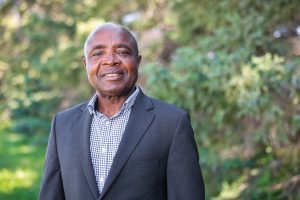
KOFI AGBLOR
PROMISE AND OPPORTUNITY
GW: How will the FCDC strategic plan guide its transformation?
Kofi Agblor: The FCDC strategic plan has six drivers. The first is to be externally facing. The second is to be market responsive. The focus is on meeting the needs of the industry. We will perform research with clear direction from the industry. The third is to expand service delivery. Fourth will be to increase funding. The fifth is to create a high-performance workplace culture and the sixth is to be recognized for scientific expertise.
GW: How will these goals be realized?
KA: A business plan with five operational areas will accomplish this. The first is partnerships and markets—increasing the number of varieties that are commercialized and increasing the licensing partners to create more collaborations with Olds College. The second is breeding. Building a centre of excellence in barley and triticale breeding will transform the sector. It is also to increase the number of acres of FCDC varieties while shortening the breeding cycle. The third area is support for research capacity and expertise necessary to support the needs of breeders and breeding programs. Fourth is operations; we’re looking at implementing smart ag technologies to drive greater efficiencies in field, plot and farm operations. And to modernize the capital assets we have for efficiency, as well as to ensure we can get to the 24-month reduction in the variety production cycle. The fifth is people and culture—increase staff engagement and satisfaction to attract and retain talent.
GW: What will it take to achieve these goals and become that centre of excellence?
KA: We will diversify funding sources and expand collaborations with Olds College and other educational institutions, government organizations and private sector entities. The second part is to have a beneficial impact on the barley and triticale industry. By 2030, we want to see most triticale, feed, forage and malt barley acres in Alberta be produced with varieties developed at FCDC.
If I talk about CDC, everyone knows what this is, because its varieties are on farmers’ fields. That is what FCDC must do. At the end of the day, we will be known for the contributions we make for the farmer and the value chain. No amount of science that we do here will be recognized unless it translates into utility. And this is the shift we are making now for the Centre. We will develop farm-ready cultivars—highly competitive varieties that are among the best out there.
I want our stakeholders to see FCDC as different. The Centre is celebrating 50 years, and there is a history there. But to also look at the transformation and the momentum going on at Olds College with the digital side of agriculture. I would like cereal growers to look at the FCDC and see promise and opportunity.
GW: What do you want the agriculture sector to know about FCDC?
KA: I want our stakeholders, especially barley growers, to see FCDC as an opportunity. This is the time to engage with us, to look at making investments, because the future will rely on seed that is best adapted to your farm. Look at the programming we have at hand now in partnership with Olds College, and see the promise that we have in meeting the needs of farmers across Western Canada.
JASON LENZ
BIGGER, BETTER BARLEY
GW: You are vice-chair of the Alberta Wheat Commission, former Alberta Barley chair and you farm near FCDC. As vice-chair of its steering committee, why did you want to become involved with its transition?
Jason Lenz: Back in 1973, my grandfather was on the founding committee. During my time as chair and director for Alberta Barley, I worked closely with the Centre. I’m an interested observer and stakeholder. Several farmers sat on the committee, and that was a good step in creating focus for the Centre. A lot of farmers have helped the Centre by providing feedback. This let Olds College know how FCDC can create value and reach even higher than it has. The leadership and staff are very capable.
GW: What would you like to see FCDC focus on?
JL: As a farmer, I want to see FCDC varieties registered and commercialized. Right now, FCDC doesn’t have as big a market share in varieties that are commercially grown as compared to the other two main barley breeding centres in Western Canada—CDC and the Brandon Research and Development Centre in Manitoba. Friendly, collaborative competition between breeding centres and individual breeders can only be a positive for barley farmers.
Barley breeder Flavio Capettini has been at FCDC 10 years, and his breeding and genetics work will be present in varieties FCDC will register in coming years. Barley has always had an issue with not having short, strong straw. At field days, I’ve seen in some of Flavio’s new varieties there’s a huge change from what has been produced at FCDC over the years.
GW: What do farmers want to see from FCDC breeders?
JL: We’re looking for the next big thing. Over these last few years, Prairie breeders have done a really good job of creating new malting and feed varieties that are setting the bar higher.
A lot of check-off money goes into breeding a variety. We want to make sure money that goes toward variety development is not just creating a long list of cookie cutter varieties. We want our breeders to produce bigger, better barley.
GW: What are Canada’s natural advantages to grow barley, especially considering a large amount is exported?
JL: We’re selling our barley into the global market. Canadian barley, just like Canadian wheat and other commodities, is known around the world for being the highest quality. That’s a result of the genetics our breeders are using, the soil we’re growing it in, our beneficial management practices and our environment. We are in a short season growing area compared to Europe, but our warm days and cool nights really make our barley of the highest quality.
GW: What are your hopes for FCDC?
JL: Farmers are really looking forward to FCDC continuing to be a breeding centre in the heart of barley country. Under the new direction and leadership of FCDC the feeling is they will be able to execute on the strategic plan and the business plan. The barley breeders will push each other to produce better varieties with shorter straw, bigger yields and better disease resistance.




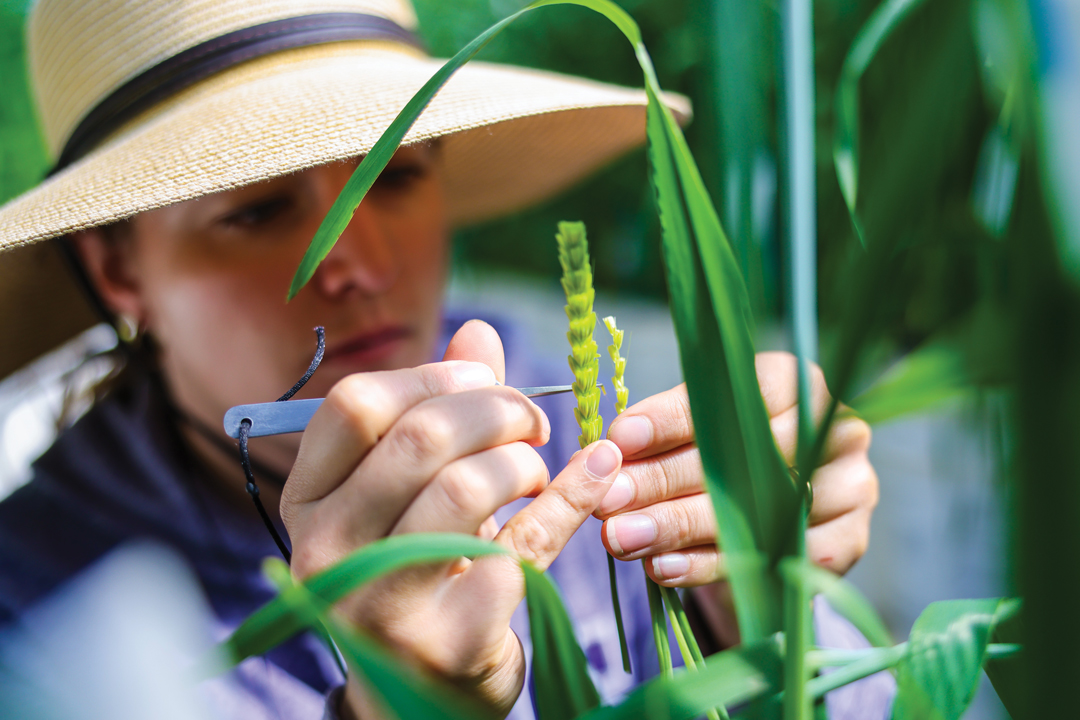
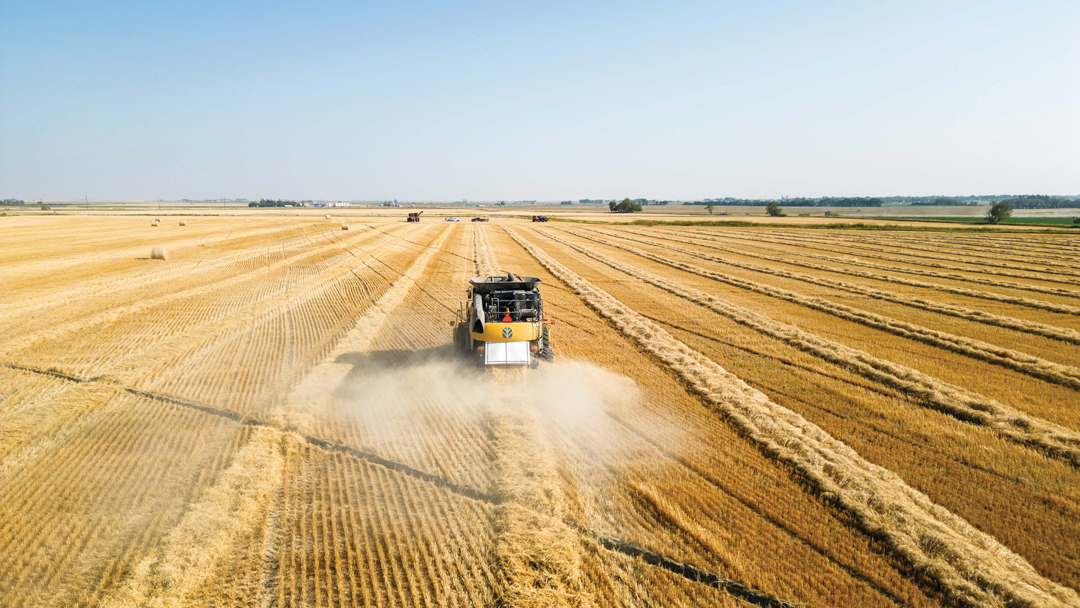
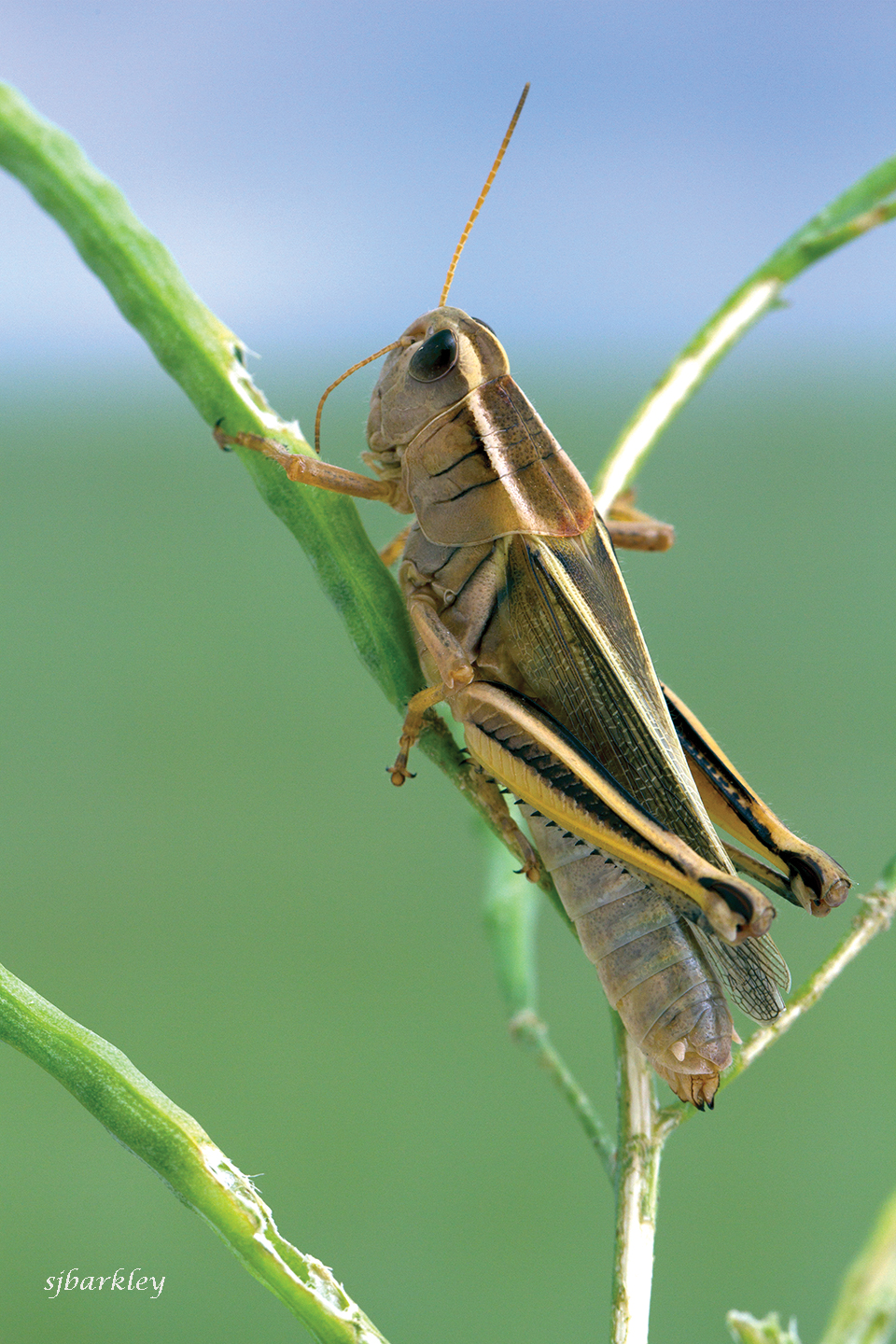
Comments